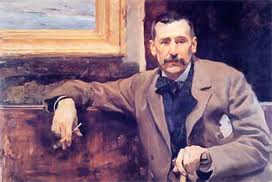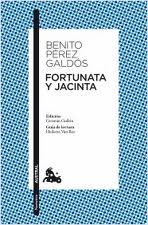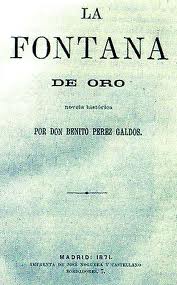Life & works of Benito Perez Galdos
Benito Pérez Galdós is considered, after Cervantes, the best author of all Spanish literature, and he's recognized as the best novel writer of the 19th century. Some of his better known works are "Fortunata y Jacinta" (1886), "Episodios Nacionales", "Miau" (1888) or "Marianela" (1878).
Benito Pérez Galdós - Life and Works

Galdós was born in Las Palmas de Gran Canaria in 1843. He was the tenth son of a Colonel, who often told him stories about the War of Spanish Independence and instilled in him the love for historical narrative. In 1852 Galdós was accepted in the School of San Agustín, which applied quite modern pedagogic techniques for the time. In 1862 he graduates in Arts from the Laguna Institute in Tenerife, and he began to collaborate in the local newspapers with satiric poems, essays and a few stories. He'd also developed an interest in drawing and painting.
Galdós arrived in Madrid when he was 19, on September of 1862, and enrolled in the University. His professors encouraged him to write and incited his natural curiosity. He was very interested in Krausism, which would strongly mark his works later on. Galdós frequented theatres and created, with other Canary play writers, the "Tertulia Canaria" (Canary gathering) in Madrid. He also went to the Ateneo to read the works of the great English and French authors, and there he met and befriended Leopoldo Alas "Clarín".
In 1864 he starts to write as commendable editor in several newspapers. He led an easy life, living first with two of his sisters and later on with his nephew José Hurtado de Mendoza. Galdós was very timid, hated talking in public and liked to go unnoticed. He had a prodigious memory and astounding retaining abilities, and was able to recall whole passages from Quixote and remember small details about a landscape he'd only seen once before. These qualities were key in the development of his literature.

In 1867 he travels to Paris to do a chronicle in the Universal Exposition, and he returned to Madrid having read Balzac and Dickens. All these activities made it difficult for him to attend his law classes and he finally drops out in 1868. He was returning to the Canaries from his second trip to Paris when the Glorious Revolution began, and instead of returning home he went to Madrid and arrived just in time to see the entrance of General Serrano. During 1869 he writes journalistic chronicles about the development of the new Spanish Constitution.
His first novel, "La Fontana de Oro", was published in 1870, and in 1873 he starts publishing "Episodios Nacionales", to try and understand the historical memory of the Spanish, and which is a reflection of the Spanish life during the 19th century. "Episodios Nacionales" is composed of 4 volumes that begin with the Battle of Trafalgar and end with the Bourbon Restoration. It's one of the most important works of all the Spanish literature, and it greatly influenced the historical novels published after it. The point of view varies, starting with a young man who find himself involved in some important events of his time as he's fighting for his love. The 4 volumes, spanned across almost 40 years, show Galdós's ideological evolution from the positivism of the first volume to the skepticism of the fifth one.

In 1876 he published "Doña Perfecta", a novel about ideological intolerance. Galdós still frequented the literary gatherings in several of Madrid's cafés, and because he was never fanatic about ideologies be befriended people who thought very differently from him. He traveled across Europe, but liked to spend time in San Sebastián and Toledo. Through friends he secured a position as a Member of Parliament in Puerto Rico, but as he barely talked, he dedicated his time at Congress to observe people.
In 1891 he went to see "Realidad", by María Guerrero, which pushed him to release his own plays. His most resounding success was "La de San Quintín", which stayed on stage for 50 nights. During his last years he wrote mainly plays, some which were stage adaptations of his own novels. In 1889 he became a member of the Spanish Royal Academy, and in 1907 he was chosen representative of the Spanish Courts and in 1909 he became president of the republican-socialist coalition with Pablo Iglesias, but he didn't fancy himself and politician and left soon. In 1919 a sculpture of him was erected in Madrid to recognize his success in life. He died in 1920 in Madrid, and more than 20.000 people went to his funeral.
Galdós had a special sensitivity for folkloric language, and he knew it so he used dialogue generously. Pío Baroja said he "knew how to make the people talk". His style is natural, he rejects rhetoric and anything that might distract from the plot. He's transparent and academic, with an underlying current of humor and irony. Galdós was one of the contenders to the Nobel Prize of 1912, but he had many political enemies who dissuaded the Swedish Academy from giving him the prize.

